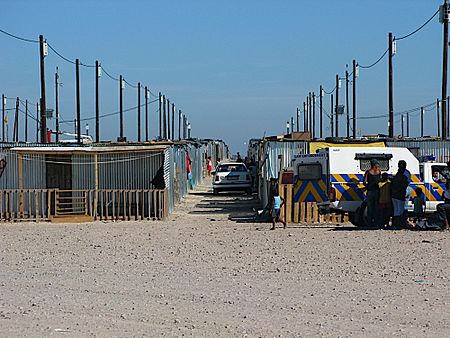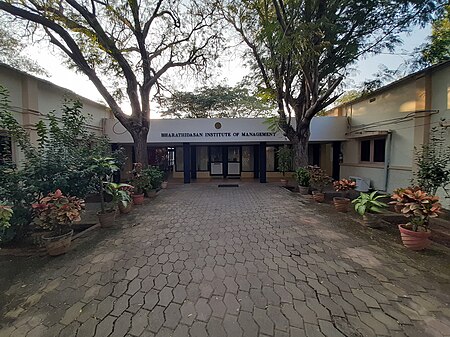Human skeletal changes due to bipedalism
| |||||||||||||||||||||||||||||||||||||||||
Read other articles:

本條目存在以下問題,請協助改善本條目或在討論頁針對議題發表看法。 此條目需要擴充。 (2013年1月1日)请協助改善这篇條目,更進一步的信息可能會在討論頁或扩充请求中找到。请在擴充條目後將此模板移除。 此條目需要补充更多来源。 (2013年1月1日)请协助補充多方面可靠来源以改善这篇条目,无法查证的内容可能會因為异议提出而被移除。致使用者:请搜索一下条目的标…

Сельское поселение России (МО 2-го уровня)Новотитаровское сельское поселение Флаг[d] Герб 45°14′09″ с. ш. 38°58′16″ в. д.HGЯO Страна Россия Субъект РФ Краснодарский край Район Динской Включает 4 населённых пункта Адм. центр Новотитаровская Глава сельского посел…

Japanese manga series Midori DaysCover of the first tankōbon volume, featuring Seiji Sawamura (left) and Midori Kasugano (right)美鳥の日々(Midori no Hibi)GenreRomantic comedy[1] MangaWritten byKazurou InouePublished byShogakukanEnglish publisherAUS: Madman EntertainmentNA: Viz MediaSG: Chuang YiImprintShōnen Sunday ComicsMagazineWeekly Shōnen SundayDemographicShōnenOriginal runSeptember 18, 2002 – July 21, 2004Volumes8 (List of volumes) Anime television seriesDirecte…

Ethnic group in America Kuwaiti AmericansTotal population3,162 (Kuwaiti ancestry. US Census of 2000)[1]25,735 (Kuwaiti-born, 2014)[2]Regions with significant populationsCalifornia, Arizona, Colorado, Florida, Illinois, Pennsylvania and West VirginiaLanguagesAmerican English, Kuwaiti ArabicReligionIslam, Christianity Kuwaiti Americans (Arabic: كويتيون أمريكيون) are an ethnic group of citizens or residents of the United States with total or partial ancestry from Kuwa…

Patriark Pavle Patriark Pavle (Paul) (bahasa Serbia: Патријарх Павле, Patrijarh Pavle; 11 September 1914 – 15 November 2009) adalah patriark Gereja Orthodox Serbia,[1] pemimpin spiritual Orthodox Timur Serbia dari tahun 1990 hingga kematiannya. Ia adalah pemimpin Gereja Orthodox Timur tertua. Karena kesehatannya memburuk, ia menghabiskan sisa hidupnya di Military Medical Academy di Belgrade. Referensi ^ Serbian Orthodox Church, history Diarsipkan 2009-04-18 di Wayback…

هذه المقالة يتيمة إذ تصل إليها مقالات أخرى قليلة جدًا. فضلًا، ساعد بإضافة وصلة إليها في مقالات متعلقة بها. (أغسطس_2010) آثار استضافة كأس العالم 2010معلومات عامةالرياضة كرة القدم الفترة 2010 تعديل - تعديل مصدري - تعديل ويكي بيانات بطولة كأس العالم لكرة القدم 2010 هي النسخة التاسعة عشر �…

Vikariat Apostolik CamiriApostolicus Vicariatus CuevensisVicariato Apostólico de CamiriKatolik Katedral Santo Fransiskus dari AsisiLokasiNegara BoliviaProvinsi gerejawiSubyek langsung Tahta SuciStatistikLuas104.000 km2 (40.000 sq mi)Populasi- Total- Katolik(per 2010)144.000120,000 (83.3%)Paroki24InformasiDenominasiKatolik RomaRitusRitus RomaPendirian22 Mei 1919 (104 tahun lalu)KatedralKatedral Santo Fransiskus dari Asisi di CamiriKepemimpinan kiniPausFran…

De finale van de Europacup I van het seizoen 1979/80 werd gehouden op 30 mei 1980 in het Estadio Santiago Bernabéu in Madrid. Titelverdediger Nottingham Forest stond tegenover het West-Duitse Hamburger SV. Net als een jaar eerder won Nottingham Forest met 1-0. Bij HSV speelde de Engelsman Kevin Keegan die in 1977 de Europacup won met Liverpool FC. Nottingham Forest werd de eerste club die vaker de Europacup I dan het nationaal kampioenschap won. Wedstrijd 28 mei 198020:30 Nottingham Forest 1 �…

American politician Joe GallegosJoe Gallegos in 2014Member of the Oregon House of Representativesfrom the 30th[1] districtIn officeJanuary 14, 2013 – January 9, 2017Preceded byShawn LindsaySucceeded byJaneen Sollman Personal detailsBorn (1941-11-28) November 28, 1941 (age 82)San Antonio, Texas, U.S.[2]Political partyDemocraticResidence(s)Hillsboro, Oregon, U.S.EducationPortland State University (BS, MSW)University of Denver (PhD)Websiteelectjoegallegos…

American track and field athlete Kelsey CardPersonal informationNationalityAmericanBorn (1992-08-20) August 20, 1992 (age 31)Plainview, Illinois, U.S.Home townCarlinville, Illinois, U.S.Height5 ft 10 in (1.78 m)SportSportTrack and fieldEventDiscus throwCollege teamUniversity of Wisconsin–MadisonTurned pro2016Coached byDavid AstrauskasAchievements and titlesPersonal best(s)Discus throw 63.52 m (208 ft 4+3⁄4 in) Weight throw 22.14 m (72 ft …

Inlet on the west coast of Scotland This article needs additional citations for verification. Please help improve this article by adding citations to reliable sources. Unsourced material may be challenged and removed.Find sources: Firth of Clyde – news · newspapers · books · scholar · JSTOR (May 2007) (Learn how and when to remove this message) Firth of ClydeMap of the Firth of Clyde.Firth of ClydeShow map of Argyll and ButeFirth of ClydeShow map of Scotl…

Daily newspaper in Little Rock, Arkansas Arkansas Democrat redirects here. For the Arkansas affiliate of the Democratic Party (United States), see Democratic Party of Arkansas. This article needs additional citations for verification. Please help improve this article by adding citations to reliable sources. Unsourced material may be challenged and removed.Find sources: Arkansas Democrat-Gazette – news · newspapers · books · scholar · JSTOR (April 2016) (L…

一中同表,是台灣处理海峡两岸关系问题的一种主張,認為中华人民共和国與中華民國皆是“整個中國”的一部份,二者因為兩岸現狀,在各自领域有完整的管辖权,互不隶属,同时主張,二者合作便可以搁置对“整个中國”的主权的争议,共同承認雙方皆是中國的一部份,在此基礎上走向終極統一。最早是在2004年由台灣大學政治学教授張亞中所提出,希望兩岸由一中各表的�…

United Nations organization United Nations Mine Action ServiceAbbreviationUNMASFormationOctober 1997; 26 years ago (1997-10)Legal statusActiveHeadquartersUnited Nations Headquarters New York, USAHeadDirector of UNMAS Ilene CohnParent organizationUnited Nations Department of Peacekeeping OperationsWebsitewww.unmas.org/en Politics portal UN Secretary-General António Guterres (right) meets with former UNMAS Director Agnès Marcaillou (centre) and UN Global Advocate Danie…

Ein p-n-Übergang bezeichnet einen Materialübergang in Halbleiterkristallen zwischen Bereichen mit entgegengesetzter Dotierung. Bereiche, in denen die Dotierung von negativ (n) zu positiv (p) wechselt, kommen in vielen elektrischen Bauelementen der Halbleitertechnik vor. Die Besonderheit des p-n-Übergangs ist die Ausbildung einer Raumladungszone (auch Verarmungszone oder Sperrschicht genannt), die beim Anlegen einer äußeren Spannung Stromfluss nur in einer Richtung zulässt.[1][2…

Range of games similar to bowls and bocce For the singular, see Boule (disambiguation). Boules Boules (/buːl/, French pronunciation: [bul]), or jeu de boules,[1] is a collective name for a wide range of games similar to bowls and bocce in which the objective is to throw or roll heavy balls as closely as possible to a small target ball, called the jack. 'Boules' itself is a French loanword that usually refers to the game especially played in France.[2] Boules-type games a…

Bharathidasan Institute of Management, TiruchirappalliMottoInfluencing the FutureTypePublic Business SchoolEstablished1984; 40 years ago (1984)ChairmanRavi AppasamyDirectorAsit Kumar BarmaStudents240LocationTrichy, Tamil Nadu, 620014, India10°44′37″N 78°47′38″E / 10.74361°N 78.79389°E / 10.74361; 78.79389CampusMHD Complex, BHEL CampusAffiliationsBharathidasan University AICTE Academy of International Business Gold Level Associate Business Mem…

Hindu temple in Tamil Nadu, India This article needs additional citations for verification. Please help improve this article by adding citations to reliable sources. Unsourced material may be challenged and removed.Find sources: Mariamman Temple, Samayapuram – news · newspapers · books · scholar · JSTOR (June 2024) (Learn how and when to remove this message) Arulmigu Sri Mariamman Templeஅருள்மிகு மாரியம்மன் திர�…

Japanese art of training plants to mimic miniature versions of large trees For other uses, see Bonsai (disambiguation). Not to be confused with Banzai (disambiguation). Bonsai, named Kenshin Tōge (lit. 'Kenshin's mountain pass'). Japanese Yew (Taxus cuspidata) presented by Uesugi Kenshin to Nagao Masakage. The tree is estimated to be about 800 years old. Bonsai at the Omiya Bonsai Art Museum Bonsai at the National Bonsai & Penjing Museum at the United States National Arboretum Bonsai …

Francesco Militovescovo della Chiesa cattolicaRitratto di S.E. Mons. Francesco Milito Caritas Veritas Unitas TitoloOppido Mamertina-Palmi Incarichi attualiVescovo emerito di Oppido Mamertina-Palmi (dal 2023) Incarichi ricoperti Vescovo di Oppido Mamertina-Palmi (2012-2023) Vicepresidente della Conferenza episcopale calabra (2013-2023) Nato7 luglio 1948 (75 anni) a Rossano Ordinato presbitero12 agosto 1972 dall'arcivescovo Antonio Cantisani Nominato vescovo4 aprile 2012 da papa B…
